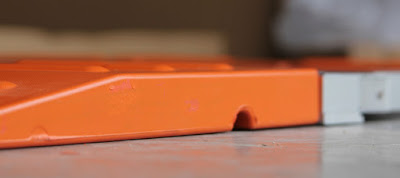On-board weighing technology is commonly applied in mining, waste management and in agriculture. Below we share a few common applications of on-board weighing systems in these sectors.
1. On-board Weighing for Mining
 |
| On-board weighing systems are often integrated on conveyors, making it easy for miner to calculate the weight of payloads directly from the conveyor belt system. |
- Haul Trucks scales - These scales are designed in such a way that they provide in-motion weighing. They have a vigorous communication gadget that enables the driver to check the payload from the cabin. Additionally, they have unique sensors that alert the driver in case of the truck is overloaded.
- Articulated trucks scales - These on-board weighing scales are usually for dump trucks and are rigid and also those with middle pivot steering. They facilitate weighing while the truck is when it is loading, moving and when unloading.
- Conveyors - conveyor belt scales are suitable for various stationary applications in mining. These on-board weighing systems can be monitored by a single controller thereby reducing the costs of supervision.
2. On-board Weighing for Waste Management
In waste management industry, there are dump truck scales. These on-board weighing scales are designed to work in majority of dump trucks to offer simple and effective weighing solution. For instance, the on-board weighing systems and on-board truck scales from suppliers like Walz Scale can offer precise results in harsh conditions and re field installable.3. On-board Weighing for Agriculture & Farming
On-board weighing systems in agriculture are available in different sizes and shapes. They are designed in a manner to ensure farmers get efficiency especially when harvesting. Examples of on-board weighing scales in agriculture include:- Grain cart scales - These scales offer solution to farmers who wish to weigh their harvested grain. They are available in various mounting systems and weighing bars thereby making it easy to install them straight to grain carts or similar equipment. Grain cart weigh scales enables farmers to enjoy convenient and easy weighing solution in any season.
- Haul trucks - These scales are available in strain gauge and hydraulic systems. They offer in motion weighing and field serviceable. They are also field installable and can weigh while loading and dumping. They have multiple communication options.
 |
| This is digital readout display equipped with PFREUNDT on-board systems. This tells the users the currently load weight directly from the cab. |
PFREUNDT: A Leader in On-board Weigh Systems
PFREUNDT is a German company that specializes in developing, engineering and manufacturing on-board weighing systems. PFREUNDT is a leader having pioneered and revolutionized the global technology in on-board weighing systems.PFREUNDT is famous for displaying a high degree of reliability. It is one of the most popular companies worldwide in the extraction, extraction, recycling business and disposal. The on-board weighing systems from PFREUNDT are therefore reliably applied in mining, dumping and agriculture. The company has made superb reputation that which has enabled it to partner with other companies requiring on-board weighing systems.
PFREUNDT has continued to enjoy global recognition among its partners because of producing superior quality on-board scales. Its products are strictly examined and controlled. The company has thrived in understanding the unique needs of the customers whether large or small.
In North America, PFREUNDT partners with leading suppliers to reach customers in the region. An excellent example of PFREUNDT supplier is Walz Scale which is based in Illinois. You can learn more about this truck scale supplier and on-board weighing system company at WalzScale.com.














